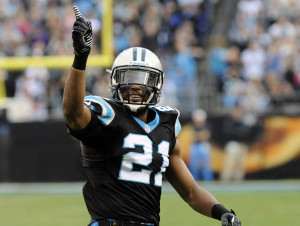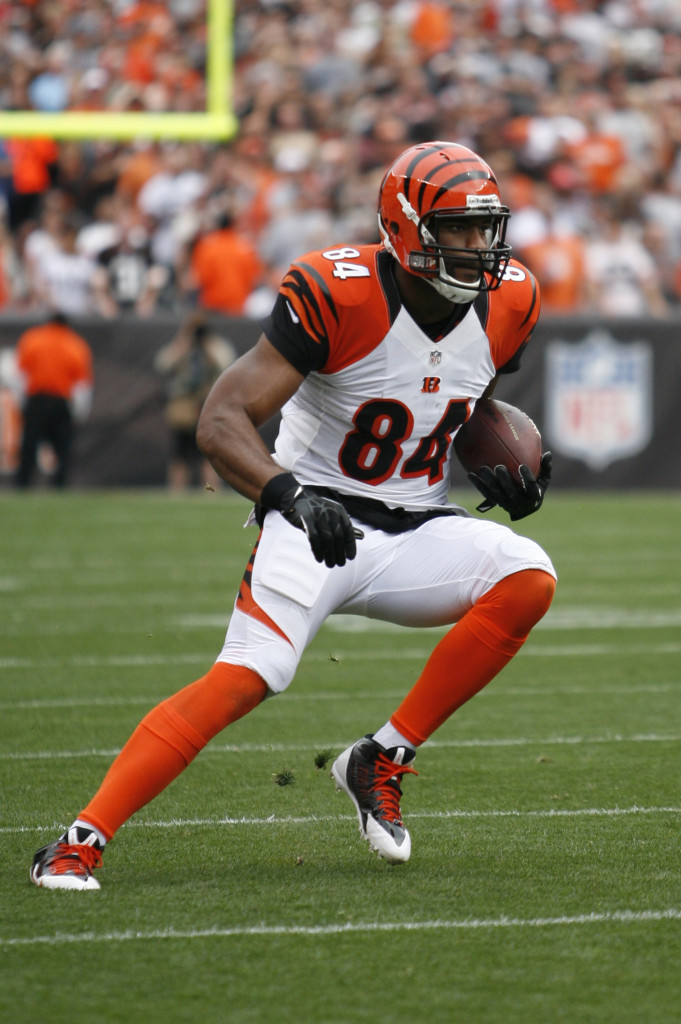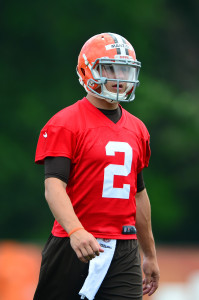Notable signings:
- Mike Pollak (G): Three years, $4.8MM. $1MM guaranteed.
- Vincent Rey (LB): Two years, $4.2MM. $1MM guaranteed.
- Jason Campbell (QB): One year, $1.5MM. $400K guaranteed.
- Dane Sanzenbacher (WR): One year, $1.2MM. $200K guaranteed.
- Danieal Manning (S): One year, $1.6MM. $100K guaranteed.
- Brandon Tate (WR): One year, $1.024MM. $100K guaranteed.
- Marshall Newhouse (OT): One year, $805K. $50K guaranteed.
- R.J. Stanford (CB): One year, $805K. $50K guaranteed.
- Taylor Mays (S): One year, $795K. $40K guaranteed.
- Alex Smith (TE): One year, minimum salary benefit. $40K guaranteed.
- Sam Montgomery (DE): One year, minimum salary benefit.
- Will Svitek (OT): One year, minimum salary benefit.
Notable losses:
- Brandon Burton (DB)
- Anthony Collins (OT)
- Kyle Cook (OL): Released
- Chris Crocker (DB)
- Brandon Ghee (DB)
- James Harrison (OLB): Released
- Andrew Hawkins (WR): Declined to match offer sheet
- Josh Johnson (QB): Released
- Michael Johnson (DE)
- Greg McElroy (QB): Retired
- Shawn Powell (P): Waived
- Dennis Roland (OT)
Extensions and restructures:
- Domata Peko (DT): Extended through 2016. Two years, $9MM. $4.4MM guaranteed.
Trades:
- Acquired a fourth-round pick (No. 111) from the Seahawks in exchange for a fourth-round pick (No. 123) and a sixth-round pick (No. 199).
Draft picks:
- Darqueze Dennard, CB, Michigan State (1.24): Signed
- Jeremy Hill, RB, LSU (2.55): Signed
- Will Clarke, DE, West Virginia (3.88): Signed
- Russell Bodine, C, North Carolina (4.111): Signed
- A.J. McCarron, QB, Alabama (5.164): Signed
- Marquis Flowers, LB, Arizona (6.212): Signed
- James Wright, WR, LSU (7.239): Signed
- Lavelle Westbrooks, DB, Georgia Southern (7.252): Signed
Other:
- Extended Marvin Lewis‘ contract through 2015.
- Have discussed extensions for Andy Dalton and Vontaze Burfict.
- Exercised A.J. Green‘s fifth-year option for 2015 ($10.176MM).
- Signed 11 rookie free agents after the draft.
- Received two compensatory draft picks.
- Claimed Dontay Moch off waivers.
Over the last few seasons, the Bengals have assembled one of the most complete rosters in the NFL from top to bottom, which has resulted in three consecutive playoff appearances. The run started after they selected A.J. Green and Andy Dalton in the first two rounds of the 2011 NFL draft, and those two players have come to the forefront of a Bengals team that has become a modicum of consistency in the AFC.
Unfortunately, despite having among the least gaping holes in the roster of all 32 NFL teams, they have also accumulated three consecutive first round exits, and have not won a playoff game since the 1990 season. Without any glaring weaknesses on the roster, and with the team scoring a total of 33 points over those three playoff losses, pressure is beginning to mount on Dalton, despite his regular season successes.
Still, the team did not do much to improve the pieces around Dalton. Cincinnati kept guard Mike Pollak, but let utility lineman Anthony Collins walk. Collins played left tackle last season, and this will push Andrew Whitworth back to anchor Dalton’s blindside. The club also failed to bring in a third receiver to compliment Green and rising star Marvin Jones. Dane Sanzenbacher, Brandon Tate, and seventh-round pick James Wright are the only three players the Bengals prioritized this offseason, and none of three are likely to supplant Mohamed Sanu as the team’s third wideout.
Dalton does have a pair of receiving threats at tight end in Tyler Eifert and Jermaine Gresham, both very talented pass catchers, and Giovani Bernard can also catch the ball out of the backfield. The Bengals drafted LSU running back Jeremy Hill in the second round, but at best he only projects to replace an aging BenJarvus Green-Ellis. Overall, however, Dalton’s weapons are not greatly improved from a year ago. With Green up for a monster extension, it will be difficult for the Bengals to invest more money in the passing game going forward. Gresham already is being pushed out of Cincinnati, if the team does not look to open its checkbook for him at the end of the year.
Dalton is up for an extension soon, as he is entering the last year of a four-year rookie deal. He will likely be given one more season to prove himself before being able to cash in, and it is unclear what his future looks like. The Bengals brought in veteran quarterback Jason Campbell to serve as Dalton’s backup, and he is not too far removed from an impressive stint as a starter for the Raiders before getting injured (and replaced by Carson Palmer, netting the Bengals ammunition to build their current roster).
Among the Bengals’ most notable draft picks was A.J. McCarron, the two-time national champion out of Alabama. McCarron’s stock slipped during the draft process, but he led some great college teams as a quarterback, and provides a certain upside that might be appealing to Bengals’ fans who have watched a signal-caller with a low ceiling in terms of his potential. If Dalton struggles in 2014, it might make sense for the team to walk away from him, and move forward with McCarron or another quarterback.
The defensive side of the ball also left little room to improve, but the Bengals added to their depth in the secondary by choosing Darqueze Dennard out of Michigan State with their first-round pick. Dennard enters a crowded depth chart at corner. Leon Hall has emerged as a star since being drafted in 2007, but has struggled with injuries, tearing his Achilles tendon twice in the last three seasons. The team is preparing for life after Hall, who will turn 30 years old later this year. The Bengals have also successfully plugged in former Pro-Bowl players Terence Newman and Adam “Pacman” Jones, who both revived their careers, playing well for the team. All this is in addition to Dre Kirkpatrick, who was a first-round pick in the 2012 NFL draft, and has yet to contribute much to the defense, starting three games last year.
The biggest loss of the offseason was defensive end Michael Johnson, who signed with the Buccaneers. Johnson had 11.5 sacks in 2012, but only managed 3.5 last season. The Bengals will lean more heavily on Carlos Dunlap going forward, but they have good depth behind him, with young contributors such as Margus Hunt, Sam Montgomery, and third-round pick Will Clarke likely to get a chance to see the field. They are still tough in the middle of their defensive line, with Domata Peko signed to an extension and Geno Atkins returning from injury.
The best asset Cincinnati has on defense may be head coach Marvin Lewis, who the team extended through 2015. Lewis is the second-longest tenured head coach in the NFL, behind Patriots coach Bill Belichick. Lewis has been able to put a defensive product on the field every year that seems to overachieve, and handles particularly well with losing stars and carrying on, as we saw last year when Hall and Atkins went out. Of course, he has failed to win a single postseason game, only reaching the tournament five times in ten seasons.
The AFC North was a top heavy division for many years, with the Steelers and Ravens dominating playoff berths for most of the 2000s. It is not the same AFC North in 2014. With the Steelers and Ravens taking a step back last year, and the Browns winning the offseason, this division is up for grabs. Still, the Bengals are a slight favorite to win the division and secure a fourth straight playoff birth.
Lewis drafted Palmer in his first season as head coach, and was given the opportunity to reboot with Dalton in 2011. Most coaches do not get the luxury to pick two franchise quarterbacks. Almost none get the chance to draft three. If the organization decides to move on from Dalton after this season, Lewis might not survive another quarterback change.
Spotrac and Over The Cap were used in the creation of this post.


